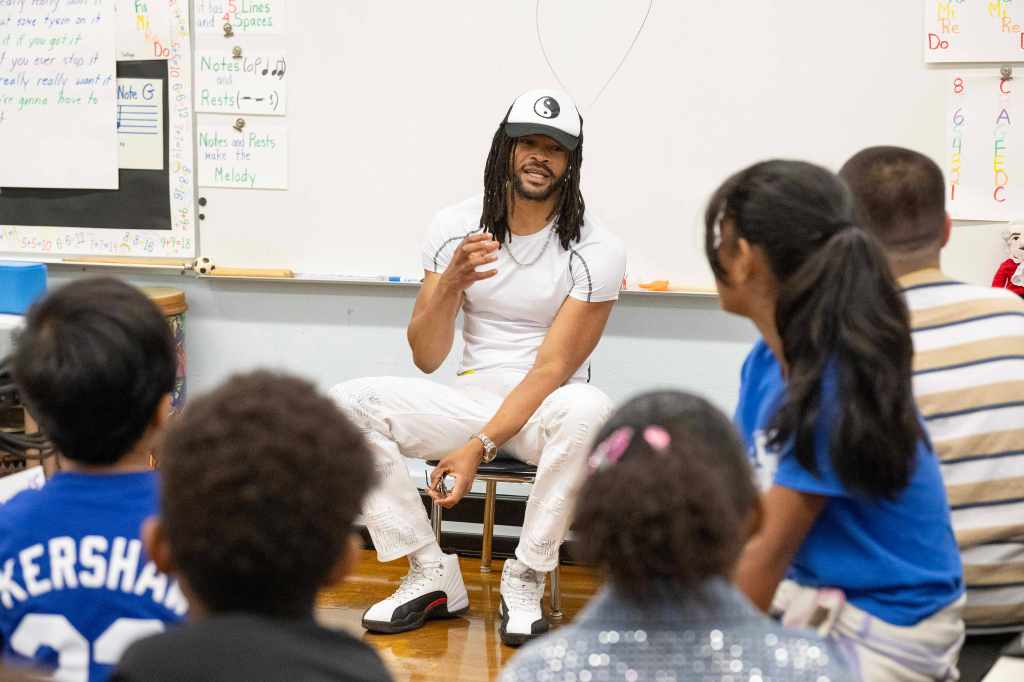Grammy award-winning producer Maejor visits Carson Street Elementary’s piano lab in Carson on Friday, Oct. 10, 2025. (Photo by Drew A. Kelley, Press-Telegram/SCNG)
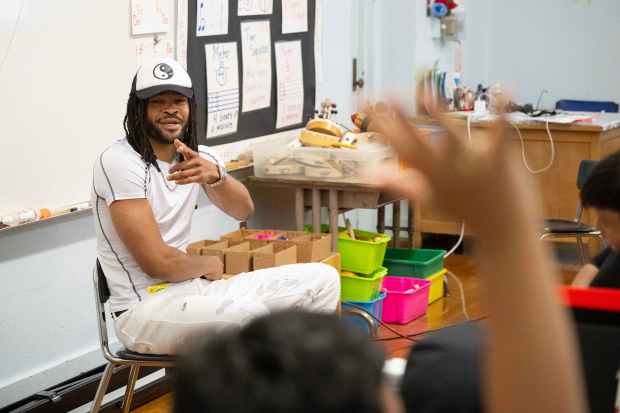
Grammy award-winning producer Maejor speaks with 3rd grade students during piano lab at Carson Street Elementary in Carson on Friday, Oct. 10, 2025. (Photo by Drew A. Kelley, Press-Telegram/SCNG)
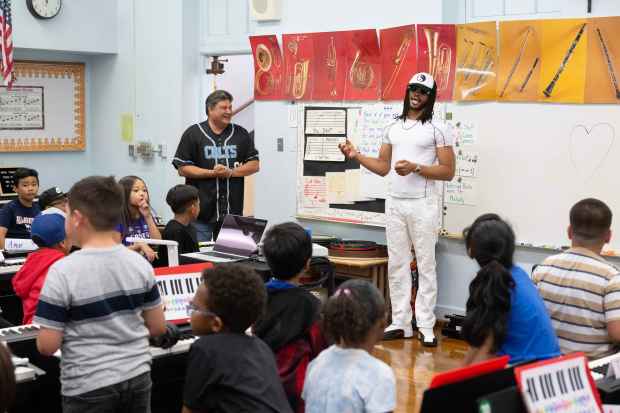
Grammy award-winning producer Maejor speaks with 3rd grade students during piano lab at Carson Street Elementary in Carson on Friday, Oct. 10, 2025. (Photo by Drew A. Kelley, Press-Telegram/SCNG)
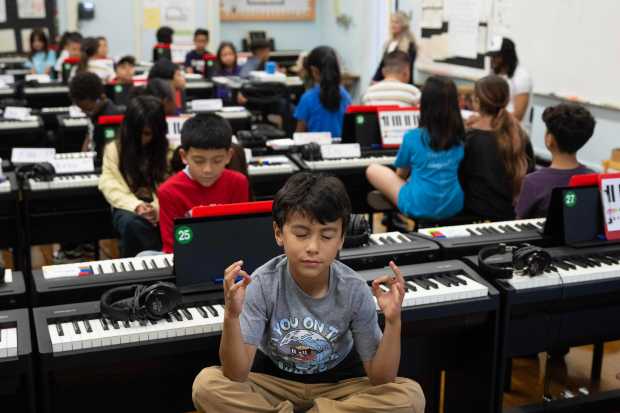
3rd grade students meditate during piano lab at Carson Street Elementary in Carson on Friday, Oct. 10, 2025. (Photo by Drew A. Kelley, Press-Telegram/SCNG)
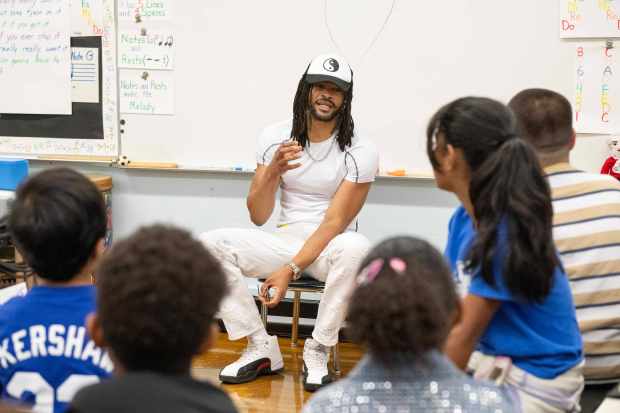
Grammy award-winning producer Maejor speaks with 3rd grade students during piano lab at Carson Street Elementary in Carson on Friday, Oct. 10, 2025. (Photo by Drew A. Kelley, Press-Telegram/SCNG)
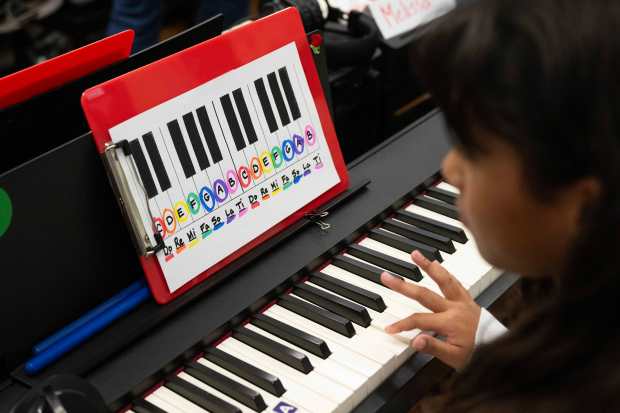
Grammy award-winning producer Maejor visits Carson Street Elementary’s piano lab in Carson on Friday, Oct. 10, 2025. (Photo by Drew A. Kelley, Press-Telegram/SCNG)
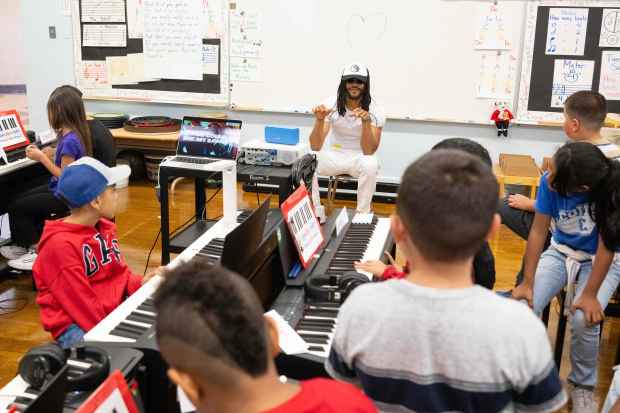
Grammy award-winning producer Maejor visits Carson Street Elementary’s piano lab in Carson on Friday, Oct. 10, 2025. (Photo by Drew A. Kelley, Press-Telegram/SCNG)
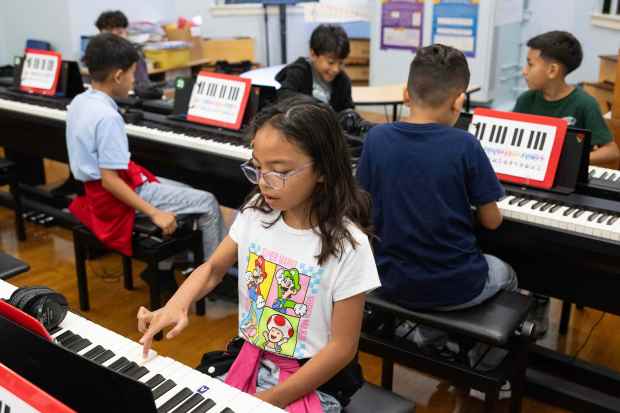
3rd grade students attend piano lab at Carson Street Elementary in Carson on Friday, Oct. 10, 2025. (Photo by Drew A. Kelley, Press-Telegram/SCNG)
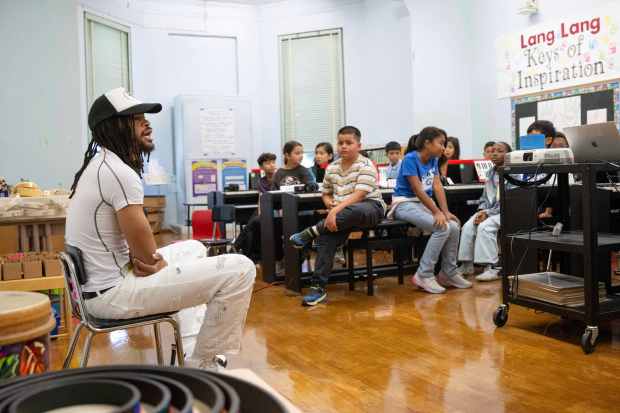
Grammy award-winning producer Maejor speaks with 3rd grade students during piano lab at Carson Street Elementary in Carson on Friday, Oct. 10, 2025. (Photo by Drew A. Kelley, Press-Telegram/SCNG)
Show Caption
1 of 9
Grammy award-winning producer Maejor visits Carson Street Elementary’s piano lab in Carson on Friday, Oct. 10, 2025. (Photo by Drew A. Kelley, Press-Telegram/SCNG)
A group of third graders at Carson Street Elementary School were thrilled to have Grammy Award-nominated producer and artist Maejor speak at their music/piano lab class on Friday morning, Oct. 10.
The children enthusiastically performed Maejor’s own “Frequency (444 Hz),” singing and playing portions of the song on their own individual pianos.
Maejor has produced and written music for artists such as Jutin Bieber, Post Malone and Frank Ocean. He told the students about the healing powers of music and how it helped him during his cancer journey.
“Music is one of those things that helps my mind to relax and (I was) so stressed about what I was going through,” he told the class. “So it showed me the power of music and now I started to try to bring some of these ideas that I learned into the world of music that you can hear on the radio or see on TV.”
Maejor came to Carson Street Elementary through The Lang Lang International Music Foundation Keys of Inspiration program, which provides grants to Title 1 U.S. public schools and similarly underfunded schools in China and London to help fund music education programs.
“At the Lang Lang International Music Foundation, we believe that music education should be a guarantee, not a luxury,” says a fact sheet on the foundation. “We envision a world where all schools offer consistent, equitable music education, with certified music educators and sustainable programming. Schools should provide music education at least twice a week to ensure students retain and build upon what they learn.”
Carson Street Elementary School is one of six in the Los Angeles United School District that received the KOI program and one of 14 schools in the state. Other districts include La Habra City School District, Magnolia School District and Santa Ana Unified School District.
KOI provides schools with 20-30 electric pianos to create a piano lab, allowing each student to have their own to learn at. Schools also receive a curriculum and support for qualified music teachers.
DeLynn Shoenholtz, the music teacher at Carson Street Elementary School, has been with LAUSD for 28 years, but came to Carson Street Elementary School six years ago to be a part of the KOI program.
“I mean, who gives 30 pianos to an elementary school?” Shoenholtz said. “Having the instrument and being able to create music in such an accessible way and then transfer it into reading music; they’ll be able to take these skills that they’re learning at a young age with them to middle school and high school, and become musicians if that is what they desire.”
The difference between how music education was taught before she started with the KOI program is “incredible,” Schoenholtz said, adding that she is able to spend more individual time with students and see them become more skilled by the end of the year.
“It instills that perseverance of practicing,” Schoenholtz said, “trying to learn something, maybe not getting it right the first time and then practicing and then getting it right and feeling that they’ve accomplished it and succeeded.”
Shoenholtz has had an extensive music career, traveling the world to teach music at a high level, but now she chooses to teach at public schools in the South Bay.
“I feel as though I’m making a difference each day and then I’m able to touch many students,” she said. “Over 28 years, that’s a lot of people to be able to share my love and joy for music and hopefully give them the chance to explore it further and appreciate it in their lifetime.”

